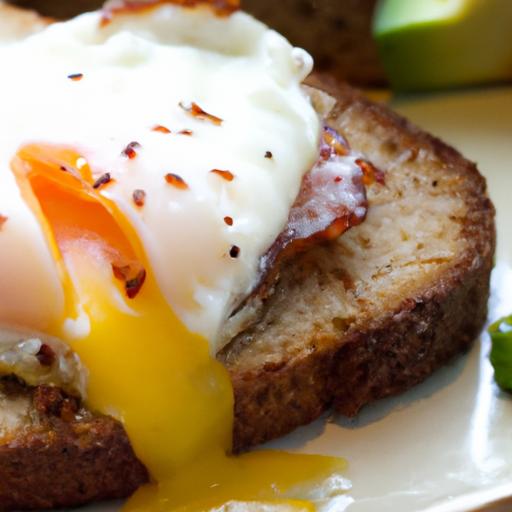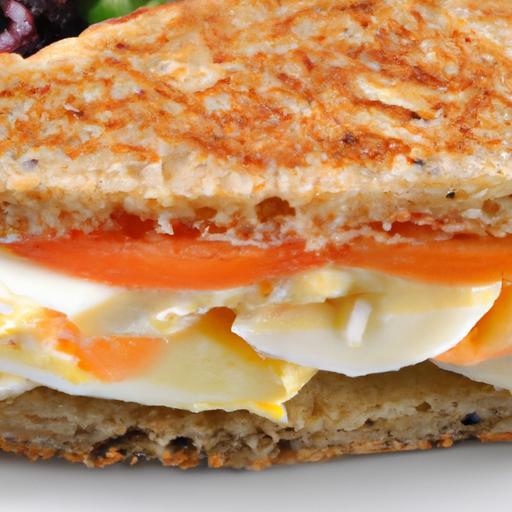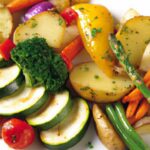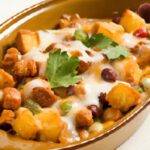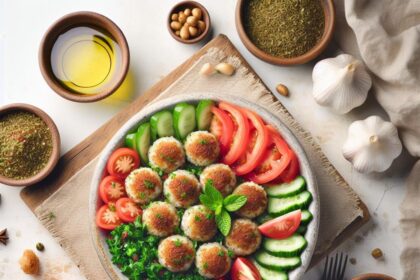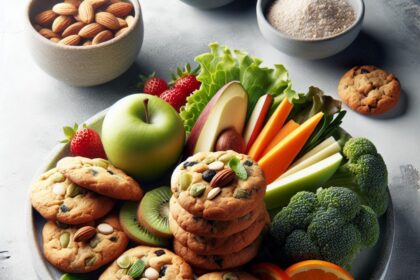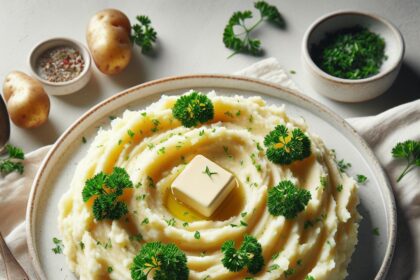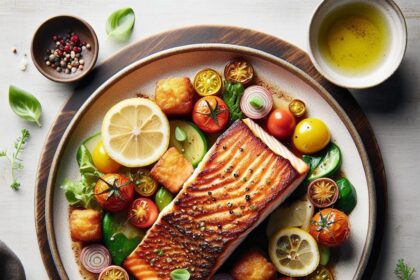In the quest for healthier eating, low carb bread has emerged as a beloved substitute for traditional loaves, promising fewer carbs without sacrificing that comforting, sandwich-ready texture. But as many low-carb enthusiasts quickly discover, these breads often carry an unexpected-and unmistakable-flavor: a distinct egginess. What’s behind this curious taste? Is it a clever ingredient hack or a necessary compromise? In “Cracking the Code: Why Low Carb Bread Tastes So Eggy,” we peel back the layers of this culinary mystery, exploring the science and recipes that give low carb bread its unique character-and why the humble egg has cracked its way to center stage in the low-carb kitchen revolution.
Cracking the code behind why low carb bread tastes so eggy reveals a fascinating interplay of science and culinary art. The distinctive eggy flavor often comes from eggs playing a pivotal role as a structural binder and moisture provider in gluten-free and low-carb loaves. Understanding this dynamic opens doors to crafting breads with balanced taste profiles without losing that satisfying texture so many seek in a healthy alternative.
Prep and Cook Time
Preparation: 15 minutes
Cooking: 45 minutes
Total Time: 1 hour
Yield
Makes 1 loaf (about 12 slices)
Difficulty Level
Medium – perfect for home cooks eager to experiment with low carb baking and achieve professional results.
Ingredients
- 4 large eggs, room temperature
- 1 cup almond flour, finely ground
- 2 tbsp psyllium husk powder
- 1 tsp baking powder
- 1/2 tsp salt
- 1/4 cup unsweetened Greek yogurt or plant-based yogurt
- 1 tbsp apple cider vinegar
- 2 tbsp melted coconut oil or avocado oil
- Optional: 1 tsp dried herbs like rosemary for added aroma and flavor
Instructions
- Preheat your oven to 350°F (175°C). Line a 9×5 inch loaf pan with parchment paper to prevent sticking and allow easy removal.
- In a large mixing bowl, whisk the eggs vigorously for 2 minutes until frothy. This aeration is key to lightening the bread’s texture.
- Add the Greek yogurt and apple cider vinegar to the eggs and blend until the mixture appears smooth and homogenous.
- In a separate bowl, combine almond flour, psyllium husk powder, baking powder, salt, and dried herbs if using. Mix thoroughly to evenly distribute the leavening.
- Gradually fold the dry ingredients into the wet mixture. Stir gently but thoroughly until the batter thickens. Psyllium husk will absorb moisture, yielding a dough-like consistency.
- Pour in the melted coconut oil and fold again for even fat distribution, which mellows the egg flavor and enriches crumb softness.
- Transfer the dough into the prepared loaf pan. Smooth the top with a spatula to ensure even rising.
- Bake for 40-45 minutes or until the crust is golden and a toothpick inserted in the center comes out clean.
- Cool completely in the pan for 15 minutes before transferring to a wire rack. This resting step sets texture and prevents crumbling.
Tips for Success
- For a milder eggy taste, substitute half the eggs with an equal volume of unsweetened mashed avocado or pumpkin puree to maintain moisture and binding.
- Add natural flavor boosters such as toasted sesame seeds or a teaspoon of vanilla extract to complement and mask strong egg notes.
- Avoid overmixing to maintain air pockets that keep your bread tender and prevent density.
- Make-ahead option: slice and freeze the bread with parchment paper between slices. Toast directly from frozen for fresh flavor and texture.
- For a fluffier crumb, incorporate a tablespoon of beaten egg whites folded in last.
Serving Suggestions
This low carb bread shines when paired with creamy spreads like whipped herb cream cheese or a drizzle of garlic butter. Garnish with fresh cracked black pepper and a sprinkle of chopped parsley for a bright finish. Serve alongside avocado slices and poached eggs for a balanced brunch plate or toasted lightly for a crunchy base beneath savory salads. Its gentle, subtly sweet undertone makes it a canvas for both savory and lightly sweet toppings such as almond butter and fresh berries.

| Nutritional Info (per slice) | Calories | Protein | Carbs | Fat |
|---|---|---|---|---|
| Classic low carb bread slice | 130 | 7g | 3g | 10g |
| With avocado egg swap | 125 | 6g | 3g | 9g |
Explore more innovative low carb baking techniques in our Low Carb Baking Guide, and deepen your understanding of egg chemistry with this scientific overview.
Q&A
Q&A: Cracking the Code: Why Low Carb Bread Tastes So Eggy
Q1: Why does low carb bread often have a pronounced eggy flavor?
A1: The eggy taste in low carb bread primarily comes from the ingredients used to replace traditional wheat flour. Common low carb substitutes-like almond flour, coconut flour, and various seeds-lack gluten, which gives bread its familiar texture and flavor. To compensate, many recipes use eggs generously as binders, moisture providers, and leavening aids. The higher egg content naturally imparts a stronger eggy aroma and flavor to the bread, distinguishing it from classic wheat-based loaves.
Q2: Can the eggy flavor in low carb bread be reduced or masked?
A2: Absolutely! There are several strategies to tame the eggy note. You can adjust the egg ratio by combining eggs with other binders like psyllium husk or flaxseed meal to reduce reliance on eggs. Adding flavorful spices (cinnamon, nutmeg), herbs (rosemary, thyme), or sweeteners (like honey or stevia) can also mask the egginess. Additionally, incorporating strong-flavored ingredients like cheese, garlic, or nuts helps balance the palette and steer the taste away from overt egginess.
Q3: Why are eggs so essential in low carb bread recipes?
A3: Eggs play a starring role in low carb breads because they deliver structure, moisture, and fluffiness-qualities typically achieved by gluten in traditional breads. Eggs’ proteins coagulate when heated, creating a network that traps air and helps the bread rise and stay firm. Without eggs, most low carb breads become dense, crumbly, or dry. So while they bring an eggy taste, eggs also enable that prized bread-like texture low carb enthusiasts crave.
Q4: Are there egg-free alternatives for low carb bread to avoid the eggy flavor?
A4: Yes! If you’re avoiding eggs or their flavor, try vegan or eggless low carb bread recipes that use flax or chia seed “eggs” (ground seeds soaked in water) or commercial egg replacers. These alternatives provide binding and moisture but typically have a milder taste than whole eggs. However, expect a slightly different texture-sometimes less fluffy and more crumbly-compared to their egg-based cousins.
Q5: Does the type of egg affect the bread’s flavor?
A5: Interestingly, yes. The flavor of eggs can vary depending on what the hens eat and how fresh the eggs are. Pasture-raised or omega-3 enriched eggs might have a richer, more buttery flavor that lends a pleasant depth to low carb bread, while generic supermarket eggs might taste more neutral-or sometimes a bit “eggy.” Using high-quality eggs can subtly improve the overall flavor profile and make the egginess more enjoyable.
Q6: What role does baking technique play in the eggy taste of low carb bread?
A6: Baking technique matters a lot! Overbaking can intensify egg flavors and make the bread dry or rubbery, while underbaking risks a raw egg taste. The right balance keeps the egg proteins properly cooked and the flavor mellow. Experimenting with baking time, temperature, and mixing methods can help you find the sweet spot where eggy notes harmonize rather than dominate.
Low carb bread’s eggy character is a fascinating baking puzzle-where taste, texture, and nutrition collide. With the right ingredients and craftful tweaks, you can crack the code and enjoy a loaf that satisfies your low carb lifestyle without overwhelming your palate.
Concluding Remarks
As we’ve unraveled the mystery behind low carb bread’s unmistakable eggy flavor, it’s clear that cracking this code involves more than just keeping carbs in check. The reliance on eggs and egg-based ingredients not only shapes the texture but also imparts that rich, savory note that sets low carb bread apart from its traditional counterparts. Whether you love it or find it a bit unusual, understanding the science and ingredient artistry behind this phenomenon helps us appreciate the innovative approaches that make low carb baking possible. So next time you bite into that golden slice, you’ll know exactly why it tastes the way it does-and maybe even savor it a little more.